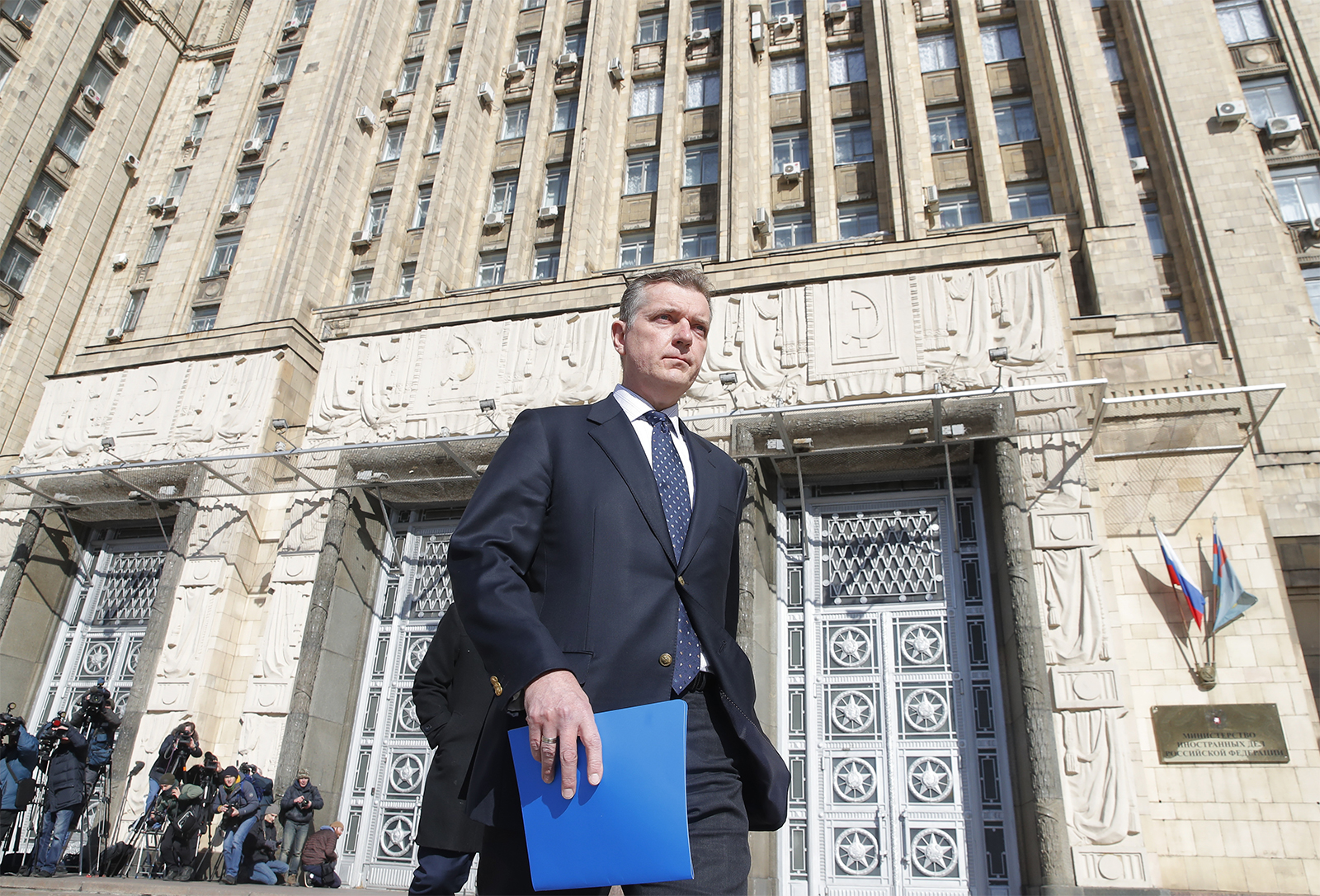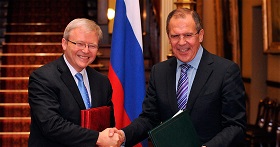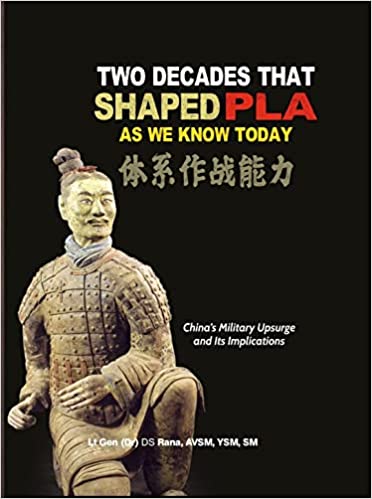Presentation to the XX April 2019 International Politics Conference
Introduction
My presentation on contemporary Australia-Russia economic relations is divided into two sections. The first focuses on geo-economics, which looks at both countries current trade and foreign investment priorities, including the implications of China’s monumental One Belt One Road project (OBOR), in which Russia has often been characterised as an integral player. Its primary focus is on the issue that in addition to its cultivation of closer links with a rising China, Russia’s ‘pivot to the East’ has included the pursuit and gradual consolidation of wider trade and institutional initiatives across the Asia- Pacific, in which Australia’s involvement has been marginal. The second and interrelated section considers Australia’s response, drawing on the debates about the commonalities and differences between Russia’s and Australia’s approaches to Asia’s economic resurgence. It also looks at the issue of the current dominance in Australian political arenas of suspicion and a ready condemnation of the governance of post-Soviet Russia.
***
To give some context to the analysis, I'll begin with a brief historical sketch which might serve as a reminder that relations between Russia and Australia have certainly not always been as uncertain as my introductory statements might suggest. Though not always plain sailing, Australians lay claim to a longstanding engagement with Russia across at least the past two hundred years. The first documented official visit to Australia was in 1807 when a small Russian trading and global exploration sloop, the Neva, dropped anchor in the magnificent, sheltered, deep-water harbour of Port Jackson, on the east coast of Australia. Now the city of Sydney, the shores of the harbour were the site of a two- decades-old British colony which had been established to relocate the inmates of Britain’s overloaded prisons to a far distant country. At least some of them were skilled tradesman whom, opportunist government policy had determined could be useful to building the colonial settlement. But, for the most part, they were made up of Britain’s wretched poor, the casualties of industrialisation and agricultural modernisation, men and women who found themselves transported to Australia as punishment for property theft, including stealing as little as a loaf of bread. As well, there was a smaller contingent of the rebellious Scots, Irish and Englanders, who also constituted a brutalised, dispossessed underclass. It's sometimes pointed out satirically that modern Australia was founded by a richly creative mix of convicted crooks, thieves and would-be revolutionaries.
Back then in those imperial times at the beginning of the 19th century, the Neva was reportedly welcomed ‘with the utmost courtesy’ by the Governor of the new British colony at Sydney Cove, Captain William Bligh. The ship was captained by twenty-seven-year-old Leontii Andrianovich Gagemeister, who as a volunteer in the British Navy had been singled out for praise by Lord Horatio Nelson, of Battle of Trafalgar fame. Despite his Russianised name, Gagemeister was in fact a highly educated, cosmopolitan, upper class Baltic German adventurer (otherwise known as Ludwig von Hagemeister) who was fluent in Russian, German, French, Portuguese, English and Spanish. By the time he reached Port Jackson he was in the employ of the Russian American Company, which owned his ship. The Captain, his officers and the Governor are said to have had a delightful time together in colonial Sydney, with a ball at Government House, attended by what passed as the local aristocracy, and which included fireworks at 11pm, dinner at midnight and dancing till the early hours. Nor has this event been forgotten. In 1957, the Australian Historic Military Society issued a special Jubilee Medal, inscribed in both Russian and English, to honour the 150th anniversary of Gagemeister’s visit.
In his report to his employers in the Russian American Company, reflecting on the visit, Gagemeister gave a strikingly upbeat assessment of the potential mutual benefits of trade between Russia and Australia. Russia would find, he wrote, ‘advantage in trade with this part of the world, as all our products here are of great value, and timber products, which are known as she oak are better than mahogany wood for furniture, may be imported from here.’
Gagemeister’s report has also been described as ‘prophetic’ in its optimistic insistence that both Australia and Russia will benefit from a regional trading bloc. ‘The soil is fertile,’ he wrote of Australia, ‘eventually one should guess this land will abound everything which is needed for life, and due to the short distance from China and the East Indies, as soon as local products become recognised, a good trade will take place.’ Though expensive,’ he added, Sydney might also serve as a convenient stopover on the relatively short sea road north to what was then Russian America (now Alaska).
Geo-economics
More than two centuries later, my first section, on geo-economics, looks at the question of just how prophetic was Gagemeister’s assessment of a bright future for profitable trade and investment, focused on the development of Russia’s trading routes into South East Asia and China, which could definitely be enhanced by the inclusion of Australia.
The short answer is that when it comes to the issue of Australia-Russia trade relations, Gagemeister’s report has remained more utopian than prophetic. This is not to suggest that today’s Russia and Australia do not share Captain Gagameister’s enthusiastic embrace of the opportunities that are available to innovative globalised capitalism in this particular economic arena. For the optimists in both countries, the dramatic emergence of China, India and S.E. Asia as economic powerhouses already is signalling the potential for unprecedented wealth creation. As Japanese Prime Minister, Shinzo Abe put it, in his address as a member of the plenary session of the 2018 St Petersburg International Economic Forum, ‘If you’re going to dream, you’d better dream big’ and invited us to imagine a region of peace and prosperity.
In the contemporary context, underlining such a vision is the expansive concept of the coming Asian Century, whose development and progress transcends Gagemeister’s report. During the past twenty years, China in particular has increased its absolute economic size six times over, as well as tripling its share of the global economy. And despite the Chinese government’s recent announcement that 2019 will likely see the slowing of the country’s fabled three decades of high GDP growth, its projected figure of 6 to 6.5 percent is almost double the International Monetary Fund’s’(IMF) prediction of 3.3 percent for the global economy. The Asian Development Bank, which is modelled on the World Bank, has estimated that, if this momentum is maintained, by 2050 the Asian region will be home to most of the world’s middle-class producers and consumers of good and services, and could account for half of global output. In other words, Shinzo Abe’s dream is not so much about creating a new World Economic Order, born of an Asian 21st century, but rather an ambitious drive to relocate and revitalise the existing international capitalist system in the fertile soil of a rapidly developing region.
Integral to this dream too is the notion that planet earth is in the throes of a Fourth Industrial Revolution. Though what exactly this implies appears to be open ended, its building blocks are generally characterised as the multifaceted extension of the Third Industrial Revolution’s late 20th century breakthrough in digital technologies towards more pervasive, sophisticated developments in such areas as robotics and nanotechnology, including stem cell research and a new generation of individualised biopharmaceuticals. A core focus too is on finding adaptive solutions to the challenges of the intensifying, man- made destruction that is being wrought by climate change. So far, for example, these have included a turn to the use of sun, wind, hydro, geothermal heat and ocean waves and tides as non-polluting energy sources, the design of cities that are insulated against environmental ravages such as droughts, flooding rains and rising sea levels, and the research into sustainable agriculture through plant genetics, soil enrichment and strategic reafforestation. Sometimes termed ‘clever futuristic capitalism,’ incidentally these are all areas to which China, Russia, as well as Western countries including Australia, are currently applying considerable investment dollars.
The centrality of China to a revolutionary Asian century is a message that has been clearly received by Australia and Russia. For both countries, China is currently the number one trading partner. In 2018, trade turnover between Russia and China was worth an estimated AU$138 billion; similiarly Australia’s exports to China have soared from $AUD7 billion in 2000 to last year’s figure of around AU$129.5 billion. As for the wider region, according to the Association of Southeast Nation (ASEAN)’s data set, total trade between Russia and ASEAN member countries increased by 40.3 percent from almost AU$17 billion in 2016 to just under AU$24 billion in 2017. Australia’s regional economic engagement has emerged as even more dramatic: the country is one of ASEAN ’s top three trading partners, with a two-way trade amounting to around AU$93.2 billion in 2016.
It should be emphasised that, though that these figures signify a commitment to economic multilateralism through diversified regional trade, in which both countries have currently adopted a wary stance regarding China’s multi-billion dollar Silk Road Fund. In contrast to Russia though, Australia’s conservative liberal government has so far rejected signing up, following advice from the national security services claiming that ‘the economic case for Australia formally joining simply wasn’t made.’ Meantime, in direct partnership with ASEAN countries, Australia continues to explore alternative approaches to improving regional infrastructure, for example through the Asian Development Bank. Similarly, despite initial optimism about the prospects of Chinese investment in infrastructure and collaborative resource projects, there appears to be a gathering mood of disappointment in Russia at the slow pace of financial negotiations which are seen as having become mired in exacting Chinese expectations of financial returns. Interestingly, in 2018 Russian Railways Company announced an AU$12 billion state-funded investment programme to modernise and extend the Trans-Siberian and Baikal-Amur lines as alternative direct freight routes from the renovated port of Vladivostok to Moscow, which are to the north of China’s overland One Belt branch across Central Asia.
In common with Australia’s wariness, public discussions in Russia also reflect a suspicion that One Belt One Road might constitute a de facto Chinese bid for global economic dominance that would erode relations with its near abroad, as well as its traditional spheres of influence across eastern, central and southern Eurasia. China’s economic ambitions are a concern shared by many critics in Australian foreign policy circles.
As Director of the thinktank, the Australian Strategic Policy Institute, Peter Jennings, has written: ‘There is a growing sense of caution that this is not just simple trade deals…It is really a broader strategy to lift the influence of China through the Asia-Pacific region and I think governments need to be careful about that…’
By contrast, also evident in much of the commentary in both Russia and Australia about the ‘pivot to Asia’ is the question of the extent to which it might herald a more stable, structured alternative to the economic and political chaos of the UK’s Brexit, the dithering disunity of the European Union and the destructive impact of Trumpism. In particular, in a marked divergence from the American President’s ill-informed, diplomatic blustering, the Australian and Putin governments repeatedly have declared their unwavering commitment to a 21st century global free market economics, regulated by institutions such as the World Trade Organisation (WTO). As Australia’s former Foreign Minister, Julie Bishop has put it: ‘I believe the test for our generation will be whether given the opportunity we defended and strengthened the rules-based order that has brought unparalleled prosperity to humanity.’ The post-Soviet government has long endorsed such sentiments, though understandably perhaps, in recent times claims by Western countries, including Australia but more especially the US, that they hold aloft the flame of a rules-based international order has been described as surreal propaganda.
In his address to the 2018 St Petersburg International Economic Forum, President Putin, proffered a less rose-coloured, more pragmatic perspective. He pointed to the ongoing fragility of the WTO in ensuring the structures of the international systems of trade and investment are not undermined either by the rampant rise of the protectionism, and overriding national self-interest. Though not perfect, the WTO has been essential to maintaining global economic stability because, Putin said, ‘…it is important that we not allow artificial limitations to curb multilateral trade, finance, manufacturing or investment. Otherwise we are just headed for “chaos”.’
Which brings me to my second section on political and cultural issues that constrain Russia – Australia trade relations. Here it should be noted that amid Russia’s high rhetoric and dismal admonitions, directed at the rickety institutional structures that have supported economic multilateralism, Australia rarely rates a mention. Mostly this stems from the reality that diplomatic relations between the two countries are best described as at their lowest ebb for decades. In addition to Australia’s steadfast assertion of the virtues of the US-dominated West, there is a clutter of explanations why today’s Russian Federation mostly ignores a prosperous, democratic, multicultural, politically and financially stable large island on the south-eastern periphery of Asia. For a start, at 92 /53 respectively in Russia’s import/export rankings, Australia has an almost negligible profile in Russia’s trade and investment priorities. And, as we know, economic relations between countries are not simply about economics. Following America’s lead Australia was quick to implement limited sanctions against Russia in response to events in Ukraine in 2014. As well, former Foreign Minister Julie Bishop consistently echoed the West’s accusations that Russia is responsible for a lengthy list of cybercrimes, human rights violations, and nerve gas poisonings, as well as the downing of Flight MH17, with 38 Australians onboard. Moreover, her view has become deeply entrenched in much of the Australian media. And, according to surveys in 2017 by the independent Pew Polling Centre only just over a quarter of Australians have confidence in President Putin and a little more than a third have a favourable view of Russia generally. Of significance too is that, despite successive waves of immigrants during the past two centuries, the Russian population in Australia by birth or ancestry is around 85,000 or.34 percent out of 25 million people. By comparison Asians, including a strong contingent of Chinese, make up nearly forty percent. One result of these figures is that Russian- Australians do not have a notable political voice in civic debate, rarely for instance participating in public discussion on television, radio and so on.
By way of conclusion, it is important to point out that analyses of present events are notoriously inadequate in divining the future. In his speech in January 2018, titled ‘Russia and Australia: 75 Years of Cooperation,’ Foreign Minister Sergei Lavrov evoked the optimistic potentials for a healthy relationship between the two countries that resonated well with the reports by Captain Gagemeister two hundred years ago:
We are convinced, Lavrov said, that there are the necessary prerequisites for
bringing Russian-Australian relations to a new level for the benefit of
the people of our two states, in the interest of strengthening
regional and global stability and security.
‘What needs to be done,’ he concluded, ‘is to put it all into practice.’






